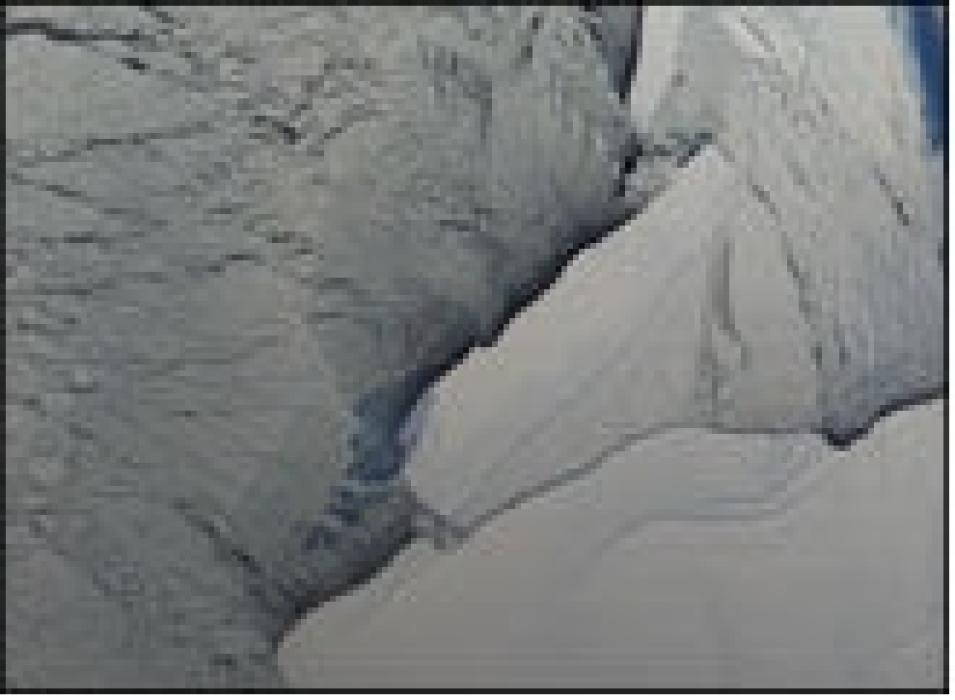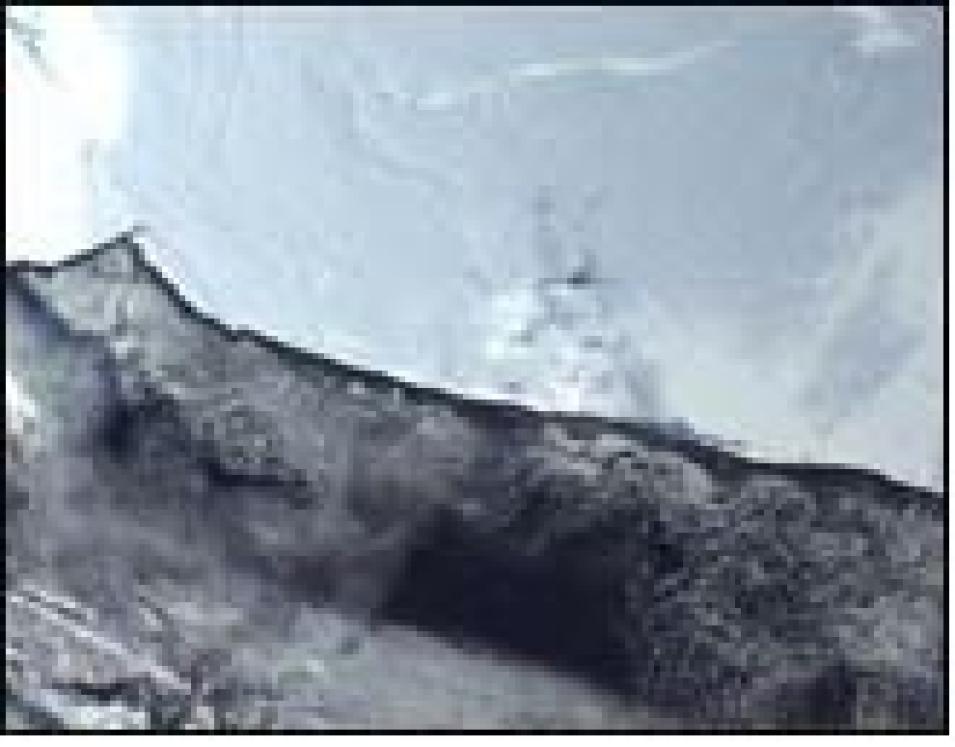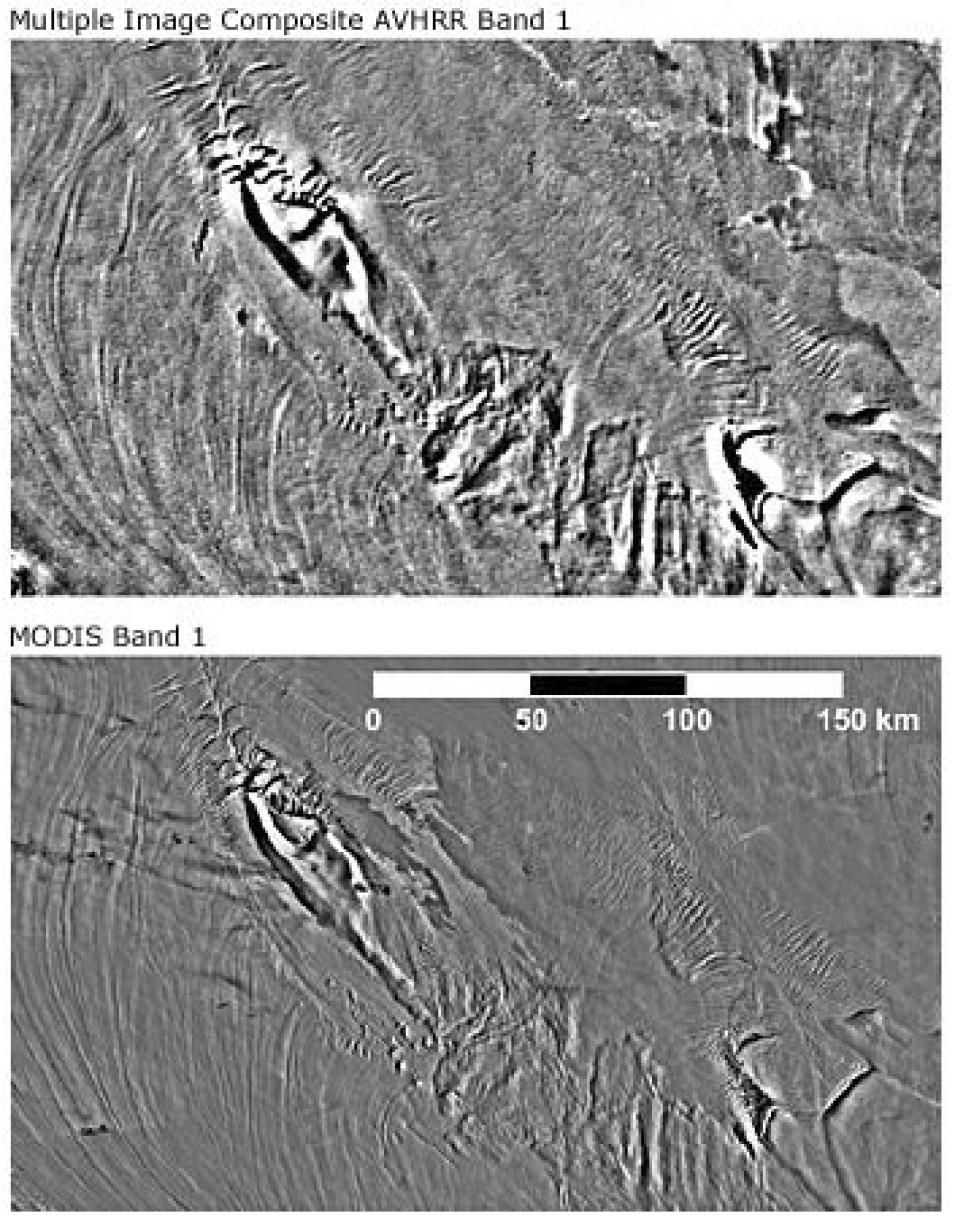"MODIS takes an image of the same area at high latitude about once every 100 minutes. Like AVHRR, it is sun synchronous and orbits the Earth about 14 times per day, taking up to eight images of the same area, depending upon the latitude. Overlap increases at high latitudes. By combining images from three or four orbits, we can see flow stripes through their entire path," Fahnestock said.
"The sun's aspect and angle change with consecutive orbits, so changes in illumination allow us to see subtle slope differences on the ice sheet surface," said Scambos. "The surface doesn't change quickly so we only need a few cloud-free images for our research. We typically select images taken in the spring when the air is clear, cold and dry, and before surface melt begins. In spring the low sun elevation provides as great a variation as possible in surface brightness levels."
In a 2000 study, Fahnestock, Scambos, and their collaborators used AVHRR and Landsat imagery to map ice flow history along Antarctica's Siple coast by looking at ancient flow lines and rifts in the ice. Using MODIS' more detailed imagery, they hope to refine this history, and use it as a guide to predict what will happen in the area over the next 1,000 years.
"Our best initial guess is that similar processes to those that occurred in the last 1,000 years will continue. If we get a good characterization of what's happened in the past 1,000 years then we've got a road map for the next 1,000 years. If anything changes relative to this, we'll be surprised — and perhaps be able to interpret it as something related to, for example, climate change," Scambos said.
"MODIS imagery will also be used to complete a Landsat map of Antarctica," said Fahnestock. "MODIS' visible imagery will fill in the information around the pole where Landsat can't capture images because of its satellite orbit. The National Science Foundation recently funded Christina Hulbe, a research scientist at Portland State University, and me to determine how ice stream flows are changing. We know that a number of the ice streams have slowed down in parts and that the flow patterns are changing. The MODIS imagery lets us make arguments about the causes of active flow changes and will help determine whether this process repeatedly occurs on the ice sheet as it gets smaller and smaller."
References
Fahnestock, M.A., T.A. Scambos, R.A. Bindschandler, G. Kvaran. 2000. A Millennium of Variable Ice Flow Recorded by the Ross Ice Shelf, Antarctica. Journal of Glaciology. 46(155):652-664.
For more information
NASA National Snow and Ice Data Center Distributed Active Archive Center (NSIDC DAAC)
| About the remote sensing data used |
| Satellite |
Landsat |
Terra |
| Sensor |
AVHRR |
MODIS |
| Parameter |
Antarctic topography and ice history |
Antarctic topography and ice history |
| DAAC |
NASA National Snow and Ice Data Center Distributed Active Archive Center (NSIDC DAAC) |
NASA Goddard Earth Sciences Data and Information Services Center (GES DISC) |


